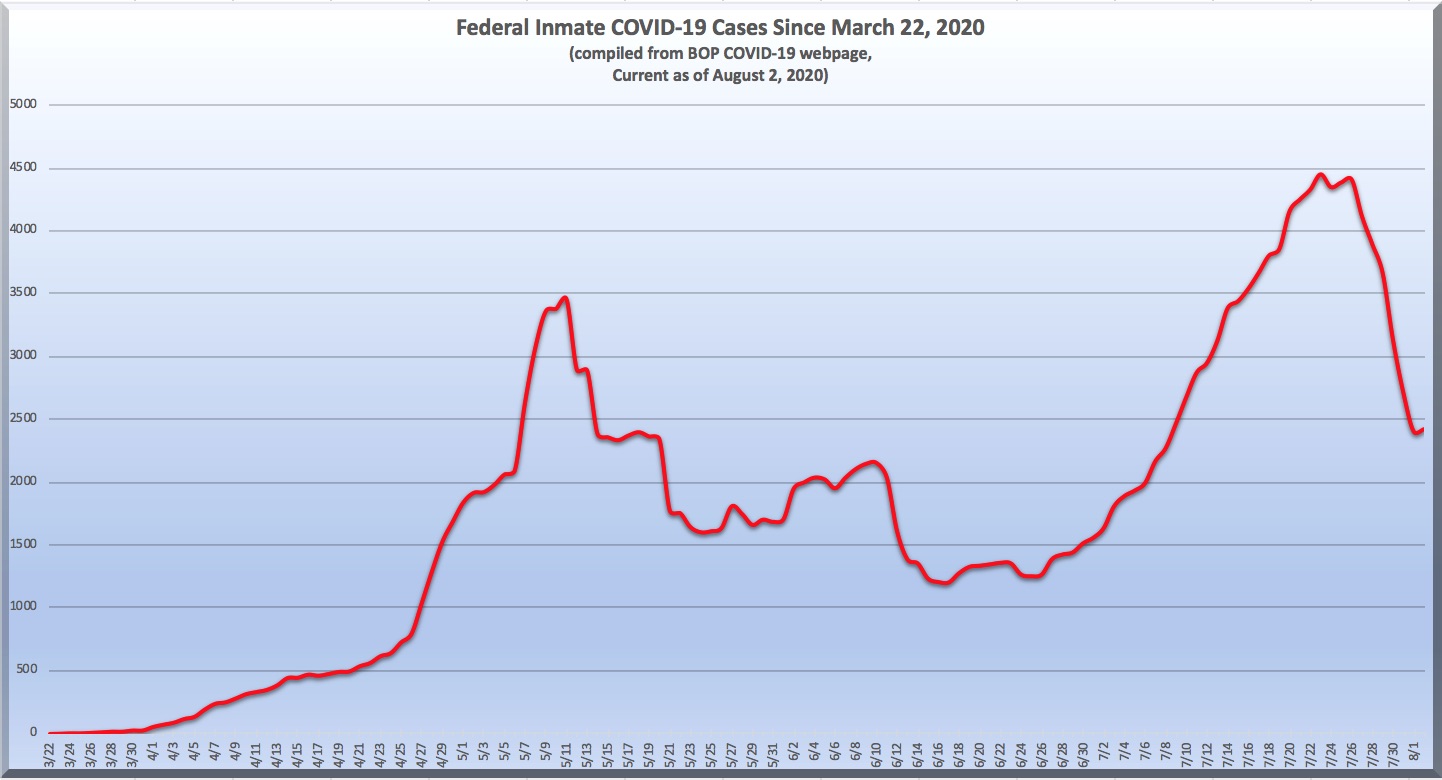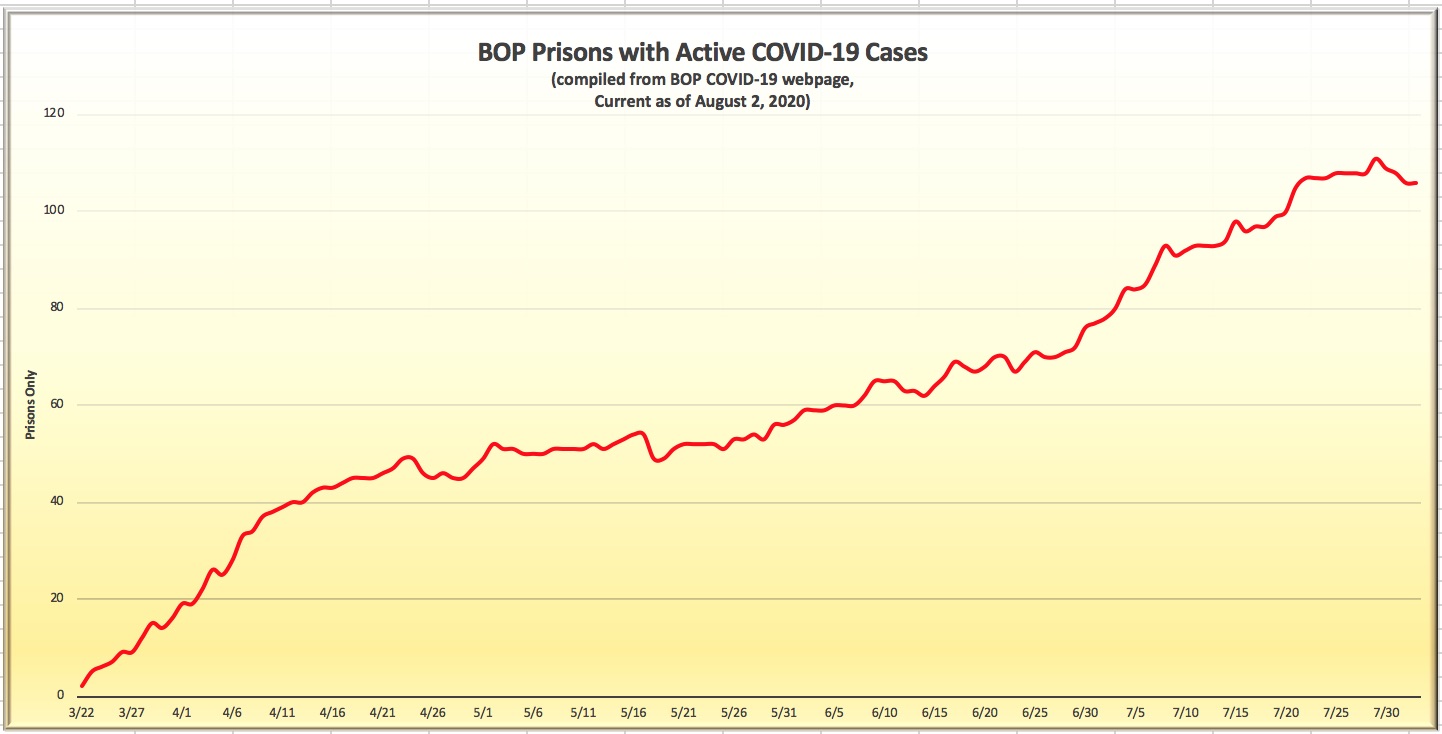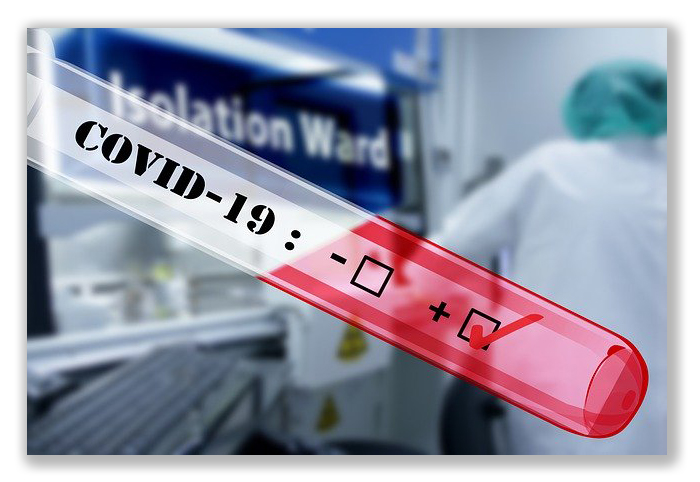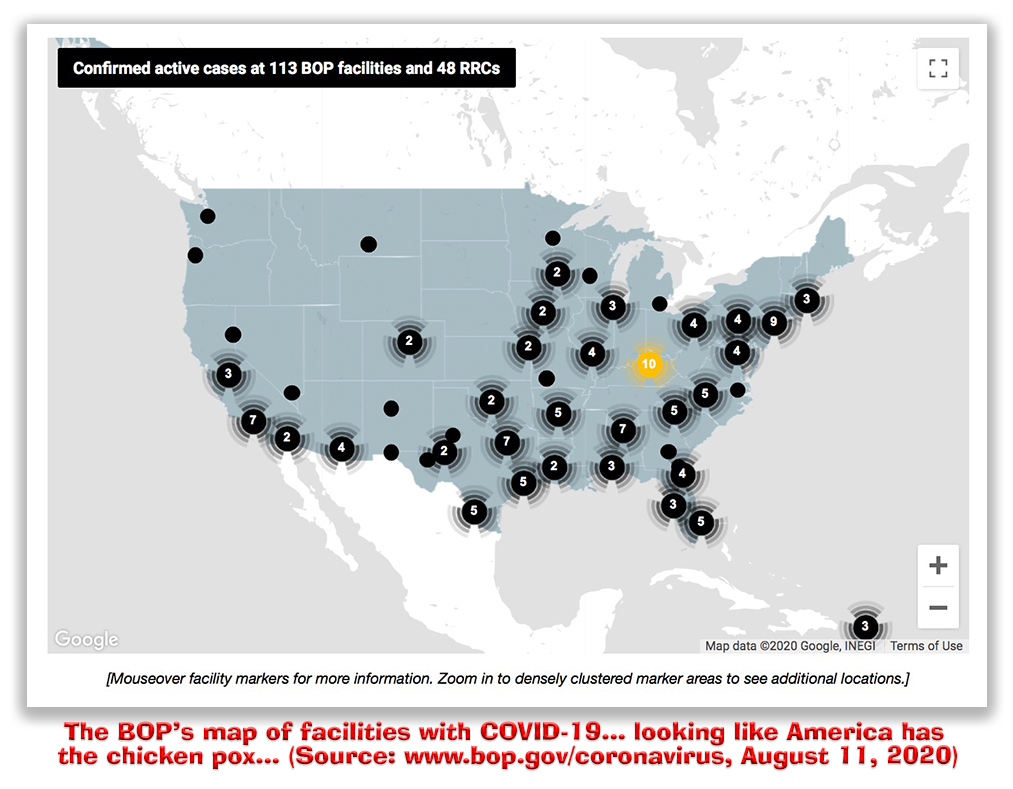We post news and comment on federal criminal justice issues, focused primarily on trial and post-conviction matters, legislative initiatives, and sentencing issues.

MIRACLE MATH AND A CONNECTICUT COVID-19 SETTLEMENT
If you can’t heal’ em with healthcare, then mend ‘em with math.
 The Bureau of Prisons just completed a week that was nothing short of miraculous. With nearly 4,500 sick inmates only eight days ago, the BOP reported only 2,426 active cases of COVID-19 last night (101 of which are federal prisoners in private joints). To find any comparable medical miracle, you’d have to go back to the Bible.
The Bureau of Prisons just completed a week that was nothing short of miraculous. With nearly 4,500 sick inmates only eight days ago, the BOP reported only 2,426 active cases of COVID-19 last night (101 of which are federal prisoners in private joints). To find any comparable medical miracle, you’d have to go back to the Bible.
The numbers have nothing to do with inmates actually beating coronavirus (although some certainly have done so). Instead, it’s purely arithmetic. The CDC COVID-19 guidelines for prisons directs that people with confirmed or suspected COVID-19 infection be put into medical isolation “to prevent their contact with others and to reduce the risk of transmission.” Medical isolation is to end when the inmate meets pre-established testing criteria for release from isolation. The criteria include that “least 10 days have passed since symptom onset” and the inmate has no other symptoms.
The BOP appears to be following the 10-day standard, which is letting it write hundreds of inmates off the “infected” list every day, even in the face of other numbers that should give BOP officials pause. Inmate deaths reached 110 this week (105 in the BOP, five federal inmates in private prisons), with two inmates dying in Texas and three in Florida. (The BOP has added a note on its webpage that four of the deaths occurred while the inmates were on home confinement, which a reasonable person might think was a technique for deflecting blame – you know, the ‘see, we’re not killing them as fast as CARES Act release is’ kind of thing).

In the last month, the number of BOP employees with COVID-19 has quadrupled, with the number last night standing at 503. Given there have been no family visits or inmate transfers for 120 days or better, BOP staff people coming and going are the last vector standing.
The virus is still active in 106 facilities, 86% of all BOP prisons. As FCI Beaumont proved in June, it’s possible to go from eight COVID-19 cases to 463 in a little more than a month. Now, it seems it may be USP Lewisburg’s turn (see below).

Notably, after the number of BOP inmates with the virus fell for every day in the past week – in the last three days by double digits – the decline stopped, and the numbers inched up by a percentage point, last night.
In COVID-19 legal news, inmates claiming that conditions of confinement at FCI Danbury put them at risk of COVID-19 settled last week after prison officials agreed to an enhanced review process to evaluate prisoners for CARES Act home confinement. The inmates sued in late April when FCI Danbury was among the hardest hit BOP facilities. By early May, about 60 inmates and 50 staff members had contracted the disease and one inmate has died.
The settlement requires the prison to continue with a rigorous process that ranks inmates by their susceptibility to infection and associated health risks and identifies candidates for various forms of early release. Shortly after the case was filed, US District Judge Michael P. Shea accused the prison administration of failing to comply quickly with guidelines issued by the Dept. of Justice and Centers for Disease Control and Prevention for evaluation and possible release of inmates.
 Attorney David Golub, whose law firm represented the inmates pro bono, told the Hartford Courant, “What he basically said to them was, ‘You have to identify the people who are medically vulnerable, you have to identify them right way and you have to make reasoned decision about whether to release to home confinement or not.’ And he monitored them,” said .
Attorney David Golub, whose law firm represented the inmates pro bono, told the Hartford Courant, “What he basically said to them was, ‘You have to identify the people who are medically vulnerable, you have to identify them right way and you have to make reasoned decision about whether to release to home confinement or not.’ And he monitored them,” said .
The parties will file a joint motion to certify the settlement class today.
I reported last week about the DOJ Inspector General’s report on FCC Lompoc, California, which included that the BOP’s use of CARES Act home confinement authority “was extremely limited.” This week, the Lompoc administration responded that “these findings must be placed in context, as these were unique circumstances where the BOP, along with the rest of the country, was learning about how to treat and manage this novel virus. The mitigation of COVID-19 in all of our facilities, including FCC Lompoc, has been and remains our highest priority.”
The IG report found that the BOP had identified 509 Lompoc inmates who qualified for CARES Act release, but had release only eight of them. Since the Report and a July 14 court order in the class-action suit brought by Lompoc inmates against the institution, the BOP has sent 72 CARES Act home confinement recommendations to a review committee, while an additional 655 applications have yet to be looked at.
 In Pennsylvania, USP Lewisburg – long COVID-19 free – has begun testing inmates after finding a case of the virus last Thursday. As of last night, 35 inmates have tested positive. All cases are at the institution’s penitentiary, not the camp. A BOP spokesman told local media that testing should increase the number of COVID cases there.
In Pennsylvania, USP Lewisburg – long COVID-19 free – has begun testing inmates after finding a case of the virus last Thursday. As of last night, 35 inmates have tested positive. All cases are at the institution’s penitentiary, not the camp. A BOP spokesman told local media that testing should increase the number of COVID cases there.
As of last night, the BOP had completed 41,000 tests, which – if every inmate got only one test – would cover 26% of all inmates. A full 28% have tested positive.
CDC, Interim Guidance on Management of Coronavirus Disease 2019 (COVID-19) in Correctional and Detention Facilities (July 22)
CDC, Discontinuation of Isolation for Persons with COVID-19 Not in Healthcare Settings (July 22)
Hartford Courant, Danbury prison inmates settle with Bureau of Prisons in suit over COVID threat (July 27)
Whitted v Easter, Case No. 3:20cv569 (D.Conn.)
Santa Maria, California, Sun, Court order, federal inspection agree with class-action lawsuit’s claims that Lompoc penitentiary could have better stopped the spread of COVID-19 with more home confinement (July 29)
Order, Torres v. Milusnic, Case No. 20cv4550 (CD Cal., July 14, 2020)
Lompoc, California, Record, Officials defend methods used in Lompoc prison’s response to COVID-19 (July 28)
Sunbury, Pennsylvania Daily Item, Federal Bureau of Prisons reports 35 inmates tested positive for virus at USP Lewisburg (Aug. 1)
– Thomas L. Root


 Keller said during news conference in Lewisburg, Pennsylvania, last Friday that the aim of the caucus is to improve BOP accountability and transparency, address systemic issues within the system and ensure the health and safety of corrections officers, staff, inmates and the communities surrounding the prisons.
Keller said during news conference in Lewisburg, Pennsylvania, last Friday that the aim of the caucus is to improve BOP accountability and transparency, address systemic issues within the system and ensure the health and safety of corrections officers, staff, inmates and the communities surrounding the prisons. Other members of the caucus are Republican Reps. Glen Thompson of Pennsylvania, Elise Stefanik of New York and Rodney Davis of Illinois and Democrat Reps. Matt Cartwright of Pennsylvania and Andy Kim of New Jersey.
Other members of the caucus are Republican Reps. Glen Thompson of Pennsylvania, Elise Stefanik of New York and Rodney Davis of Illinois and Democrat Reps. Matt Cartwright of Pennsylvania and Andy Kim of New Jersey.












